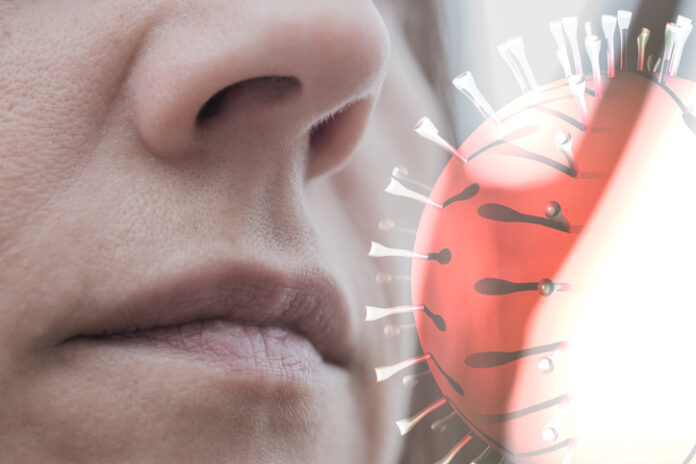In a fourth revision, the U.S. Centers of Disease Control and Prevention (CDC) now says the COVID-19 virus spreads by both aerosols and large droplets.
On October 5, the agency stated “based on current science that people are more likely to become infected the longer and closer they are to a person with COVID-19.” The CDC says the guidance is based on “some published reports” documenting transmission more than six feet away or after someone left a room in a poorly ventilated area. It did not list the reports behind the guidance change and did not respond to an email inquiry at the time of writing.
The agency’s flipflopping on transmission has been a source of public confusion. On September 18, the agency stated the virus can be spread by tiny particles, also known as aerosols, beyond six feet, and that ventilation is the key to controlling spread. On September 21, the CDC stated that September 18 “draft version” on aerosol spread was posted in error. Both announcements have been removed from the CDC’s website.
For months, the CDC said the virus was spread by large droplets. Large particles are emitted when someone coughs or sneezes vigorously but when particles are large, it is believed they can fall to the ground more quickly and not cause rampant transmission. Aerosols, on the other hand, can linger in the air.
Do Masks Help?
The distinction between aerosols or droplets is important because mask mandates presume the virus is spread by droplets.
In a July 13 JAMA network article, researchers Michael Klompas, M.D., Meghan Baker, M.D., and Chanu Rhee, M.D. state that if the virus is spread by aerosols that can linger in the air, medical masks would be inadequate “because aerosols can both penetrate and circumnavigate masks.”
On other measures, the authors write, “face shields would provide only partial protection (because there are open gaps between the shield and the wearer’s face), and six feet of separation would not provide protection from aerosols that remain suspended in the air or are carried by currents.”
The authors state experimental evidence shows SARS-CoV2 (the virus that caused COVID-19), like influenza and other common respiratory viruses, is spread by aerosols, but that coughing and speaking can produce droplets and aerosols and that both can remain in the air and travel up to 27 feet. Aerosols can remain in the air longer if ventilation is poor.
“All told, current understanding about SARS-CoV-2 transmission is still limited,” the report concludes.
The Life of Public Health Threats
Masks and social distancing have become all the rage, says Erwin Haas, M.D. and infectious disease specialist and policy advisor to The Heartland Institute which publishes Health Care News.
“In July, 250 or so experts proposed aerosols which are very tiny droplets that float in the air for a long time and spread widely. Aerosols bypass masks,” Haas said. “One gets them out of the air by exchanging the air many more times or by running the air past UV lights such as was done in elevators back when tuberculosis (TB) was common.”
Haas says that over time, the incidence of TB declined. There is a TB vaccine, but it is only given to infants in countries with a high rate of infection, according to the CDC.
“The fact that new cases of COVID-19 keep cropping up despite distancing, masks, closed schools in the summer, etc., means to me that we don’t know much about its transmission,” Haas said.
“In Feb-March, schools and colleges closed, people began wearing gloves and started disinfecting surfaces. Supplies of disinfectant became short. After that it was social distancing and stay at home orders,” Haas said. “It was this later maneuver that saw the peak of hospitalizations and deaths. Then, in around May, it was ‘wear masks, it’s droplets.’ In July, it’s aerosols and masks may not help, but we have to design buildings to purify the air. There was actually an insight for a few days that sewage transmitted it back going back to January.”
Haas says COVID-19 is slowly changing and may be considered a past threat soon enough.
“In a long career, I’ve seen Rheumatic fever disappear, tuberculosis drop by 80 percent, toxic shock disappear, legionnaire’s become rare, AIDS appear and tamed, syphilis disappear and re-appear,” Haas said. “You can’t step into the same river twice.”




















In light of the latest comments, what should the average senior citizens do? Average citizen?